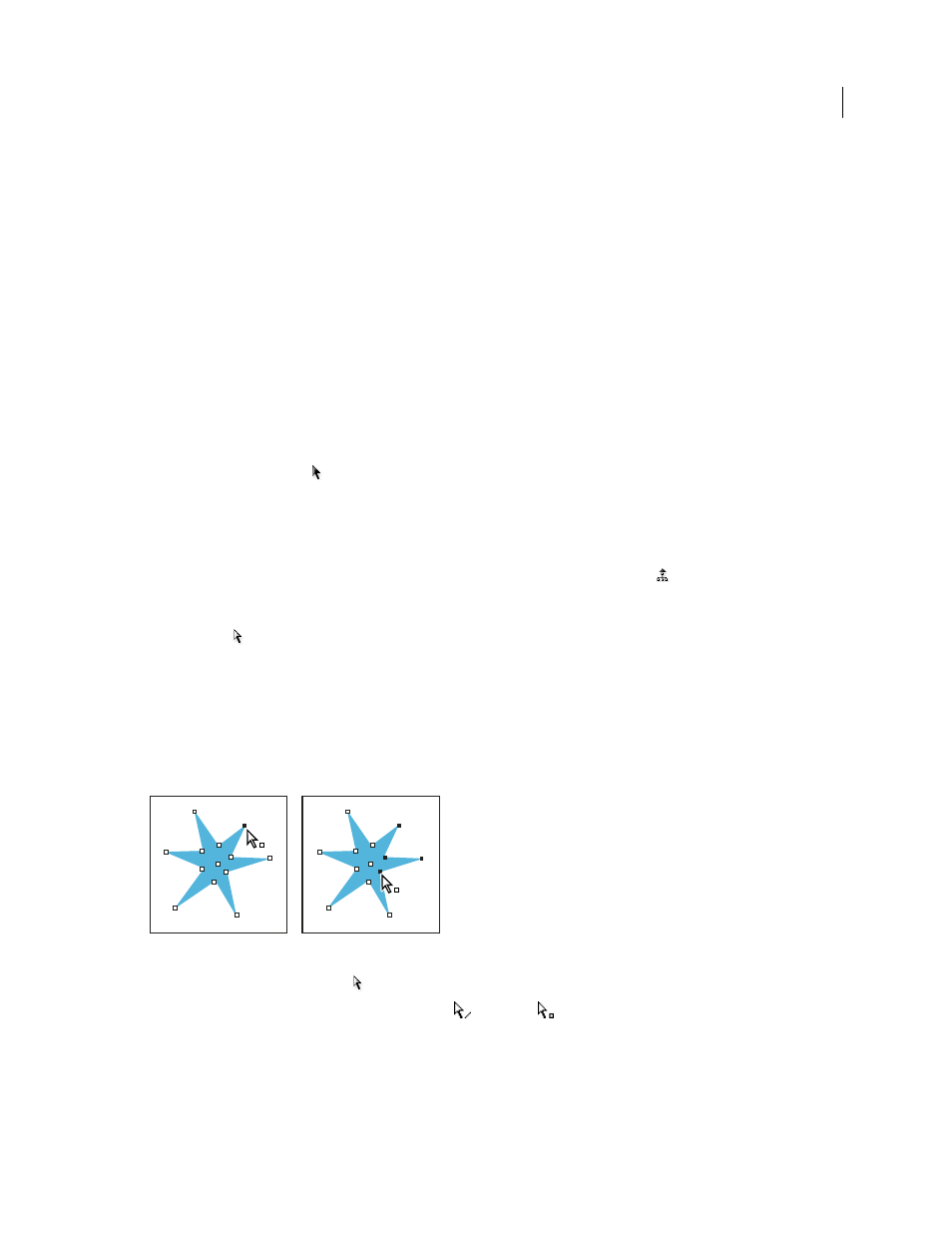Select a bounding box, Select a path or points on a path – Adobe InDesign CS5 User Manual
Page 410

404
USING INDESIGN
Frames and objects
Last updated 11/16/2011
Select nested or overlapping objects
Keys for selecting and moving objects
Select a bounding box
For any object, you can select its bounding box—a rectangle that represents the object’s horizontal and vertical
dimensions. (For grouped objects, the bounding box is a dashed rectangle.) The bounding box is also called a
container. The bounding box makes it possible to quickly move, duplicate, and scale the object without having to use
any other tool. For paths, the bounding box makes it easy to work with an entire object without accidentally altering
the anchor points that determine its shape.
Note: For more precise moving and scaling, and for other modifications such as rotation, use the Control panel or the
Transform panel.
❖
Using the Selection tool , do one of the following:
•
Click the object. If the object is an unfilled path, click its edge. If the object is an image, click the content grabber to
select the bounding box of the image, or click outside the content grabber to select the frame.
•
Drag a dotted selection rectangle or marquee around part or all of the object.
•
With a graphic object or nested content selected, click the Select Container button
on the Control panel.
When you select one or more objects with the Selection tool, you see a bounding box that indicates the size of each
object. If you don’t see a bounding box when an object is selected, you may have selected the object using the Direct
Selection tool
.
If you click a frame and it is not selected, the frame may be a locked item, it may be on a locked layer, or it may be a
master page item. See “
Select a path or points on a path
Paths in InDesign are defined by anchor points, end points, and direction lines. You select anchor points and end
points using the Direct Selection tool.
A path with a single point selected (left) and multiple points selected (right)
1 Using the Direct Selection tool
, click the path to select it.
Notice how the tool changes when it’s above a path
or a point
.
2 Do any of the following:
•
To select an individual point, click it.
•
To select multiple points on the path, press Shift as you click each point.
